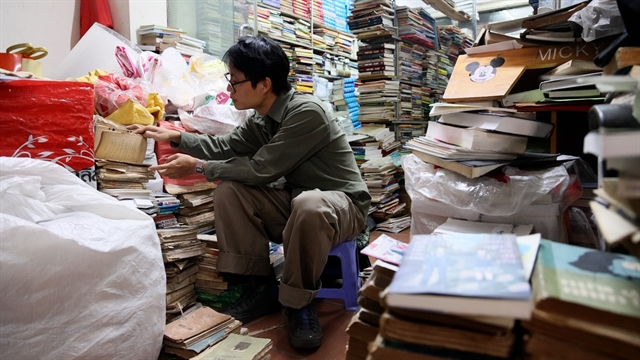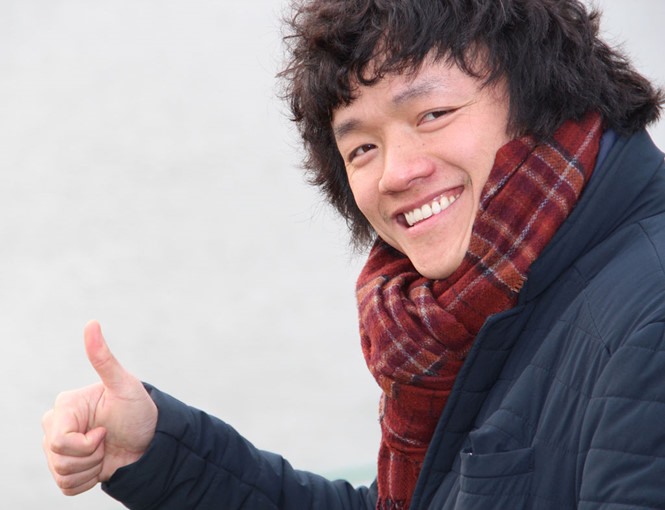 Life & Style
Life & Style

Ngô Hồng Quang is a modern ethnic musician. He is energetic and diligent, working to create compositions that combine traditional and contemporary elements to perform around the world.
 |
| Musician Ngô Hồng Quang. |
Ngô Hồng Quang is a modern ethnic musician. He is energetic and diligent, working to create compositions that combine traditional and contemporary elements to perform around the world. Quang returned to Việt Nam recently for the release of his second album and performances at primary and high schools in his homeland of Tứ Kỳ District in the northern province of Hải Dương.
The album – entitled Nhìn Lại (Looking Back) – was released on Feburary 22 in Hà Nội. Last year, Quang and French guitarist Nguyên Lê released the albnum Hanoi Duo, earning him a nomination for Musician of the Year at the German Echo Jazz Awards.
Quang studied music at the Việt Nam National Academy of Music and the Royal Conservatory Den Haag in the Netherlands.
Lý An spoke with Quang about his second album.
Your first album was a combination of traditional music and western instruments. What is your second album?
The second album is my collaboration with poet and professor Phan Lê Hà. Hà and I met after my performance in Hawaii and she said she wanted to co-operate with me to make music.
She wrote the lyrics of all 12 songs on the album. The most attractive of Hà’s poems is their purity, simplicity and strong contemporary elements combined with traditional elements.
It fits very well with the music I’m pursuing. This album is also a challenge for me because I have never made electronic music as in this album. The music path I am pursuing is to honour the values of Vietnamese music through contemporary work.
There are many Vietnamese ethnic music elements in this album such as music of the Mông ethnic people, xẩm (blind busker’s singing) and music of the Tây Nguyên (Central Highlands) region. The album combines traditional instruments such as đàn nhị (two-string fiddle), đàn môi (jew’s harp) and sáo Dao (the Mông’ flute) with electronic music.
The first song on the album uses the sounds of flute and khèn (pan-pipe) of the Mông, jew’s harp, my vocals and electronic music. I think my music is not easy to enjoy because it has its own timbre and rhythm.
You made two albums within a year which were both highly praised within the profession and by music lovers. How do you find enough time for writing, practicing and performing?
In recent years, I have focused on composition and practicing. Strangely, I almost never practice singing. I have never studied vocal music. I sing completely instinctively and I don’t even know breathing techniques.
The songs I compose even professional singers find difficult to sing because the music is very complicated. But I am confident in my aural skills, which enable me to imitate anything in terms of melody.
It is lucky I’m gifted. I don’t need to practice singing, so I just practice yoga every morning.
Your image is often associated with a special instrument that many people probably don’t know about. Can you tell us what it is?
It is called a chiêng dây (gong with string). It is a unique and attractive instrument with 13 strings. It was made by artisan Tạ Thâm in Hà Nội. Twenty years ago, when I studied at the Việt Nam National Academy of Music, I saw it for first time. Musician Nhất Lý is among its rare players and he introduced the instrument to me. I was amazed by its unique timbre. At the beginning, I didn’t know how to play it because it does not have a scale. The only one thing I knew was that its timbre is from Central Highlands music.
On the circular board there are lead bars welded very firmly to the body which make different overtones. The instrument is very beautiful and its sound is very good. It has come with me to perform all over the world. It has fallen, broken and has been repaired many times. I have written several songs for this instrument including the latest, Đi Tìm.
Will you make an album of chiêng dây music to popularise the instrument?
It is a good idea. But to make the album I would need to research more. Chiêng dây has 13 strings including eight strings for pentatonic and five others I have to tune to different scales. But it is for recording only. It is more complicated to perform live with chiêng dây. I use ten fingers to play it and I also play it as the percussion. I will write more pieces for chiêng dây and I hope to make an album for it. — VNS